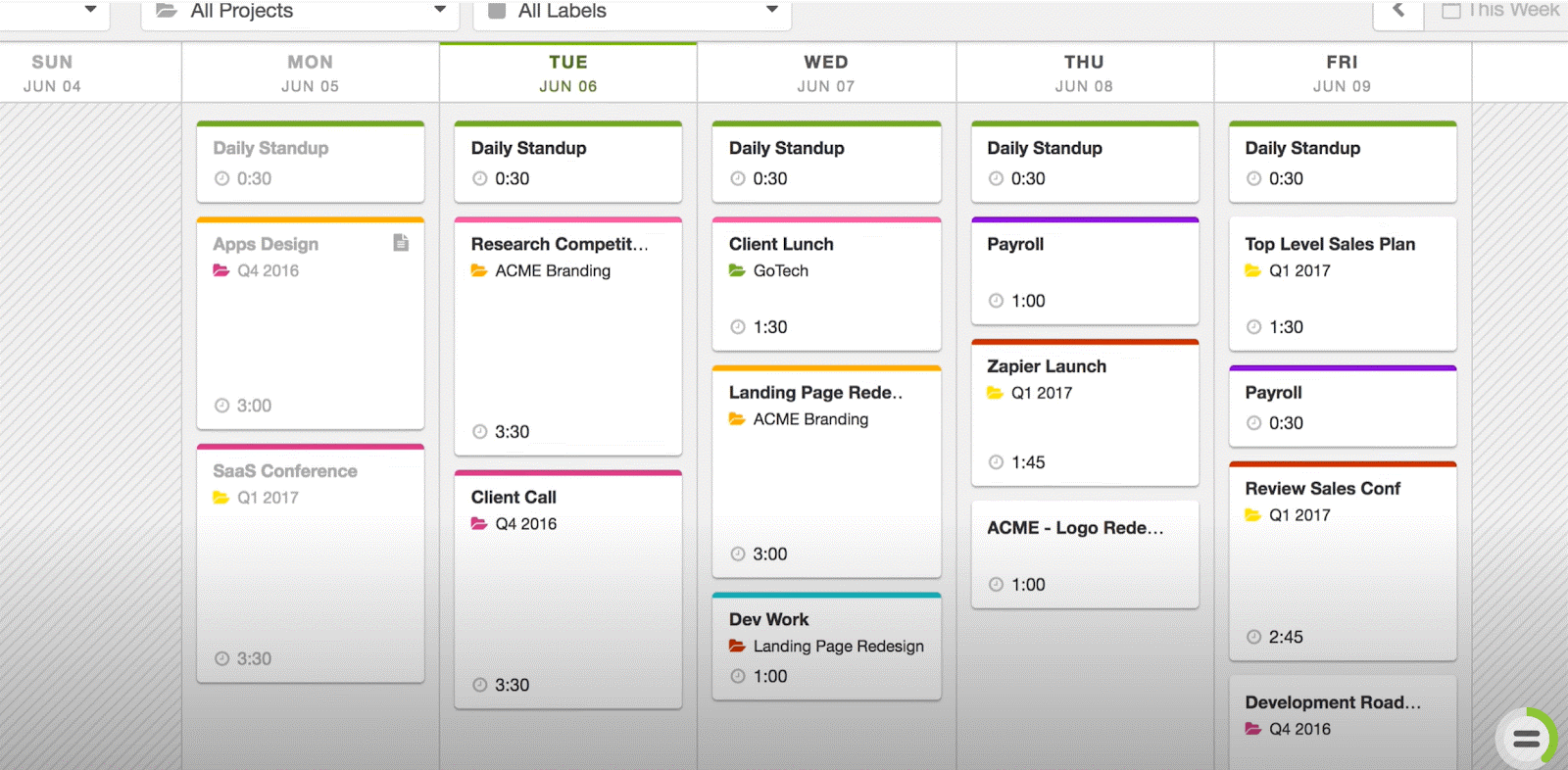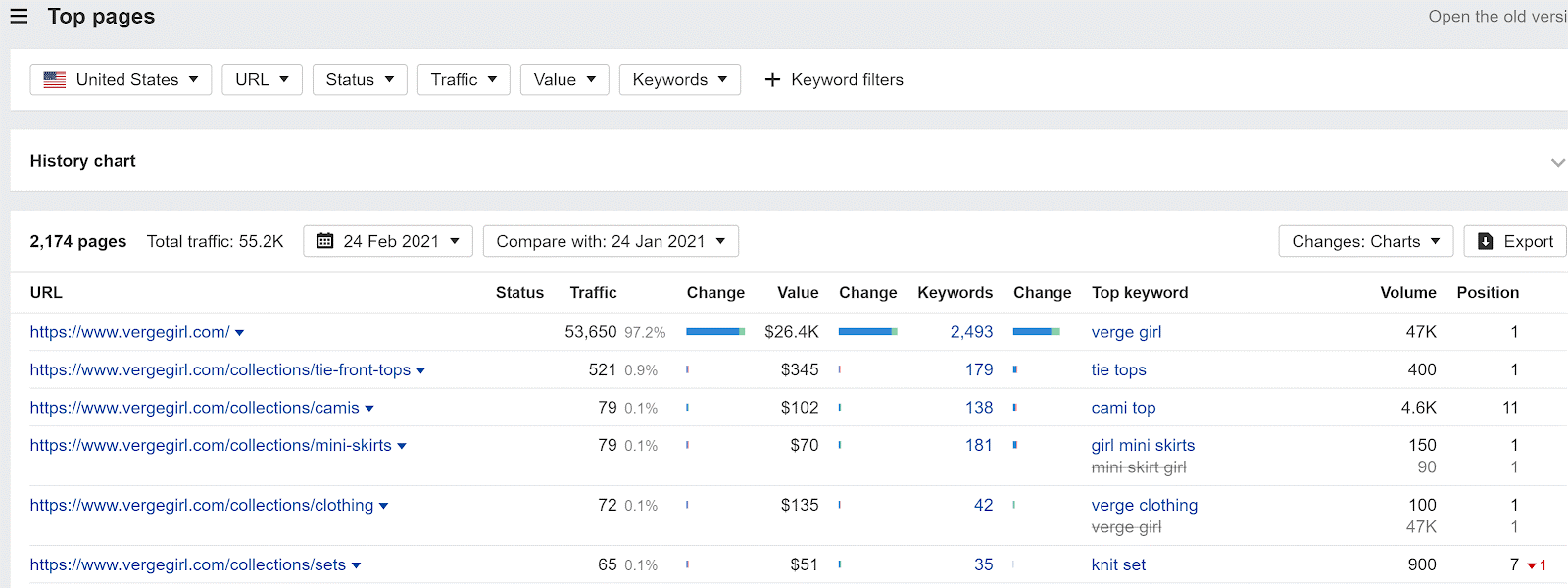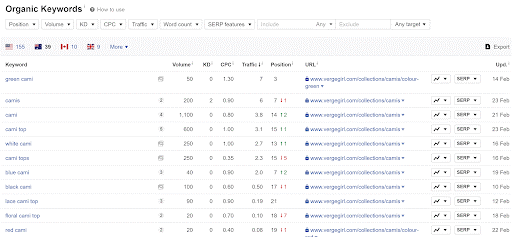Business efficiency should be a top priority for every single company on the planet, whether it’s a public or private organization.
Because it really doesn’t if you’re an ecommerce brand, brick and mortar operation or a tradesperson, if you don’t run your company efficiently then you won’t get the most out of it.
Indeed, it could be more serious than this — you might not just make less money than you could, you may generate less capital than you need to be able to survive.
Tracking tools record data that you can interpret and use to spot areas of your company that are being run inefficiently.
There’s a huge number of tools you can choose from and a wide array of areas of your business you can use them on. We’ve highlighted four examples:
- Time tracking tools
- Website tracking tools
- SEO tracking tools
- Fulfilment tracking tools
While this doesn’t run you through every step of a business, it does take you on a logical journey — from putting the foundations in place to getting your products to your customers.
We explain how you can use each of these tools, providing specific examples and demonstrating the value they offer to your business.
Time tracking tools: for employee efficiency
The foundation of a good business is ensuring that tasks are completed efficiently.
Whether you sell products or services, the price you charge customers is informed by the amount of work it takes your business to give them what they want. If it takes too long then your profit margins will slip.
This means if your workers take too long to complete their tasks then it could be hugely damaging to your company. Time tracking tools are a great way to ensure tasks are completed at a good speed and this is how you can use them.
HourStack is our example tool. While it’s not the only one on the market, it’s routinely held up as one of the best time tracking tools. It allows you to create tasks and assign them to projects. For example, you could have a ‘payroll’ task and assign it to the ‘finance’ project.
Your employees can add tasks to their HourStack profile then record how long each one takes. The image below shows you how this looks in practice:
 Credit: YouTube
Credit: YouTube
You can then review how long these tasks are taking and if a project is running over budget. This helps you to promote greater business efficiency in a few important ways:
- You can make sure you assign the most efficient people to specific tasks
- You can see if you’re under or overcharging for the products/service you sell
- You can spot any training gaps or opportunities to make internal promotions
As we explained, HourStack is just one example of a time tracking tool you can use. The point, though, is that if you want your employees to complete their work efficiently then you must review how long it’s taking them to finish their tasks.
Website tracking tools: for customer efficiency
Almost no modern company can operate efficiently without a website.
There are expectations to this but they’re becoming increasingly rare, particularly at a time when many traditional brick and mortar organisations have had their operations suspended because of coronavirus.
But to be an efficient business you need to do more than just get a website online. You need to then manage how your customers interact with it. If you don’t then you may find your company is guilty of two major customer inefficiencies:
- Time, resources and money is wasted on things your customers aren’t engaging with
- Opportunities are missed to provide your customers with things they really want
 Credit: PublicDomainPictures
Credit: PublicDomainPictures
Website tracking tools help to avoid this wastage and spot these opportunities. This is because they show you how your users interact with your website, which they do by providing the following information (all of which is available through Google Analytics):
- Users: the people who are visiting your website.
- Sessions: the number of interactions a customer makes.
- Bounce Rate: the % of people who depart your site without interacting with it.
- Session Duration: the length of time an individual spends on your website.
- Active Users: who is on your website at this exact moment in time.
You can then apply this information to make more efficient use of your time. We’ll now walk you through one such instance where it can be useful.
Let’s say you run an ecommerce fashion brand. You might find that lots of people visit a specific clothing item page. They spend a significant amount of time on the page but sales for the item are low.
From this information, you can interpret that it’s something that interests people but they need a little more convincing to buy it. You can then review similar items and compare the results.
If you find one item is selling at a better rate than the other, you can look at the differences between the pages. You might find that it’s as simple as one having a different CTA button to the other. If this is the case then you can make your sales process more efficient by tweaking your strategy and introducing high converting CTAs.
This is just one example of how using website tracking tools can promote greater business efficiency and it might not be immediately relatable to your company. The takeaway from this, though, is that by interrogating the data behind your website you can find ways of setting it up more effectively.
SEO tracking tools: for ranking efficiency
All digital businesses need to have an appreciation of SEO.
If you have a website and it’s part of your sales channel then you need people to visit it when they’re searching for solutions to their problems. It’s not enough for them to just arrive at it because they already know it exists, as this restricts your visitors to existing customers.
People search for solutions to their problems by entering questions into search engines, such as Google, Bing and Yahoo. These search engines then provide answers to these questions in the form of websites and web pages. If your website isn’t one of the first your prospective customers see, then they’ll visit a competing business instead.
The point we’re making here is that it’s really poor business efficiency if you’re not positioning your website to attract new customers. The way you can avoid this efficiency is by employing SEO tactics and using associated tracking tools to monitor their effectiveness.
SEO tactics are broad, diverse and can be complex. With this in mind, we’ll let one of the industry experts (Matt Diggity) fill you in on them:
We’ll jump back in now and explain how you can use tracking tools to support your tactics.
There are a huge number of tools you can use to track SEO tactics. Ahrefs is renowned as being one of the finest tools because it provides a huge range of data and is really user-friendly. We’ll run you through just one of the ways you can use it to track the SEO tactics you use.
Returning to our earlier example of an ecommerce fashion brand, we’ve highlighted how Verge Girl could use Ahrefs’ tracking features — the suggestions we make are ones you can use for your own website.
We start by dropping the Verge Girl homepage into the Ahrefs Site Explorer. Once it’s loaded, we then head to the top pages for Verge Girl. This is what we found.
 Credit: Ahrefs
Credit: Ahrefs
Our observation is that almost all (97.2%) of its traffic is coming from the homepage and its top keyword is Verge Girl. This is exactly the example we spoke of earlier, with Verge Girl’s customers almost all arriving at the site specifically because they searched for it and not because it featured in a SERP (search engine results page).
So, we took the URL of the page with Verge Girl’s third-highest amount of traffic. The reason we picked this page is that its top KW is in position 11 — a decent rank but far enough off the top spot to vastly reduce the chances of users visiting it, which suggests the content is underperforming.
We then dropped the page into the Ahrefs Site Explorer to analyze its top organic KWs (setting it to Australian, as Verge Girl is an Australian brand). This is what we saw:
 Credit: Ahrefs
Credit: Ahrefs
Our observation from this is that Verge Girl should optimize this page for a wider range of related KWs that it’s currently ranking for, particularly “cami” because this has a monthly search volume of 1,100. It could then track the results through Ahrefs by checking in on the page and seeing how its rankings have changed. Ahrefs does this for you — the ‘position’ column indicates the change in position, with those in green going up and those in red going down.
As we said, this is just one tool and just one way of using it to track SEO rankings. The important thing is that using SEO tactics to rank for the terms your target audience is searching for (not just your brand name) is a really efficient use of your business’ time. Why? Because it can win new customers for your company.
Fulfillment tracking tools: for an efficient conclusion
Fulfillment is the final stage in business but it might just be the most important.
The reason for this is that it’s the moment when your business delivers on its promise to customers, whether that’s a product or a service. It’s when you solve the problems your customers are experiencing.
Suffice to say then, it’s essential you ensure you keep your promises to your customers, and using fulfillment tracking tools is how you can do this. This is because these tools allow you to see where your deliveries are and if they’re getting to your customers in the agreed timescale.
There are two types of tracking tools you can use:
- Courier monitoring: for third-party distributors.
- Telematics tracking: for in-house fulfillment.
It might be that your company uses only one of these two types of delivery and needs just one tracking tool to guarantee your customers receive their orders.
Using couriers is a great way for companies to keep costs under control (you don’t need to buy your own vehicles). However, the downside is if the couriers make any errors with the delivery then it’ll be your company that suffers reputational damage.
Employing in-house deliveries lets you stay in control of your fulfillment process, as it’s your drivers taking goods to your customers. However, the con is that you need to handle the associated costs of ensuring your vehicles and drivers can fulfill your orders.
 Credit: Flickr
Credit: Flickr
The benefit of using courier monitoring tools is you get a live record of where your couriers are, what these people are doing, and how effectively they’re working. You can see if your products are arriving on time and if the money you pay these companies to handle fulfillment is being used efficiently by your business.
The good thing about telematics tracking software is that you know where your drivers are at all times. This offers the same benefit as courier monitoring of knowing if they’re on track to get your goods to your customers. There is an additional benefit to telematics software that you don’t get from courier monitoring tools. Telematics also tells you how your staff are using your vehicles because it records the following data points on driving behavior:
- How quickly your employees drive
- How sharply your staff take corners
- How harshly your workers brake
This information you get from telematics tracking software can be really helpful for business efficiency because it allows you to spot bad driving habits. These habits can lead your vehicles to experience wear and tear, meaning you need to pay for repairs and replacements. This could save your company considerable sums of money in the long run.
We’ve not highlighted any examples of companies offering specific courier monitoring or telematics software. However, there are lots available and the one(s) you select isn’t really the point. The point is that each of these tools can help you ensure your orders are fulfilled efficiently, reducing the threat of reputational damage to your business that comes from unhappy customers.
Time, website, SEO, and fulfillment are all areas of your company that benefit from the employment of time tracking tools, with each (in its own way) being a way you can promote greater business efficiency.
While you may choose to use different tools and might employ them slightly differently, we recommend that you take our methodologies on board and introduce them into your business at the earliest opportunity. Doing so could both save and make you money.
